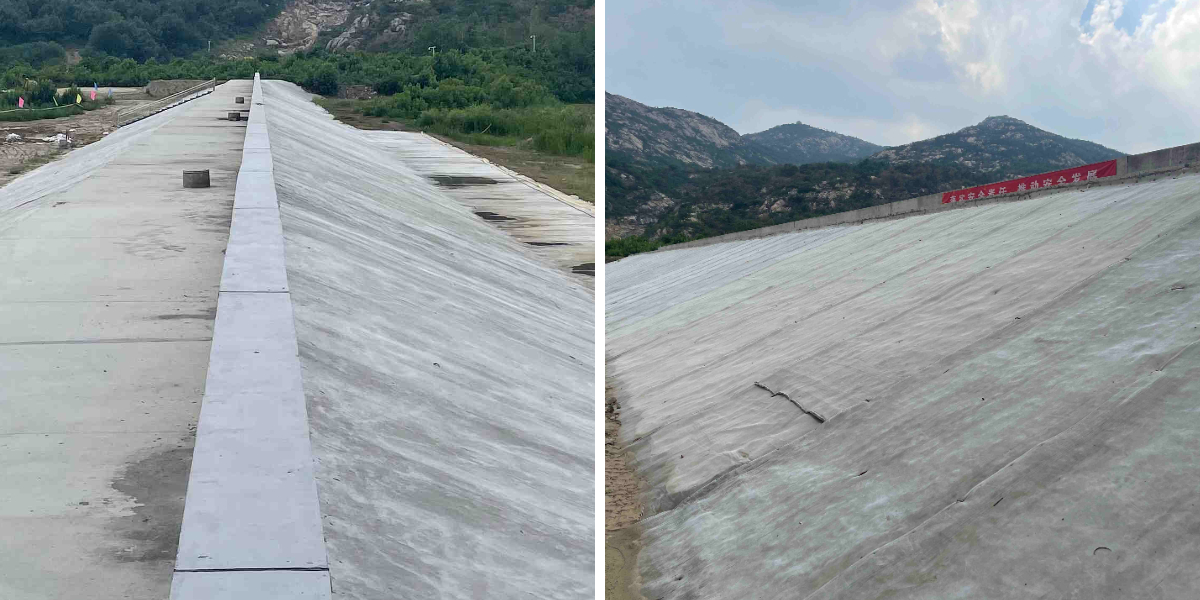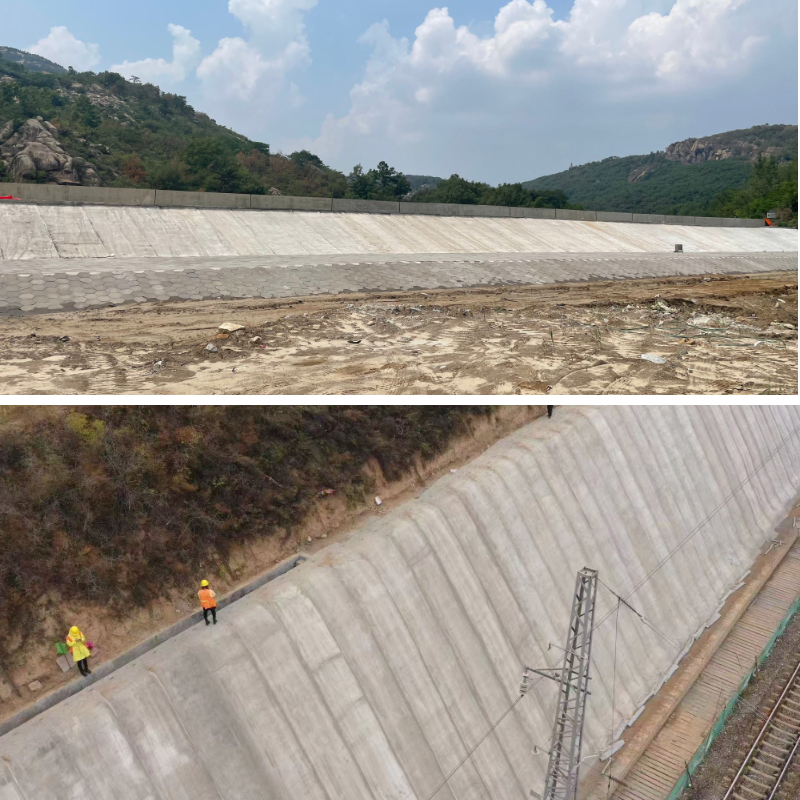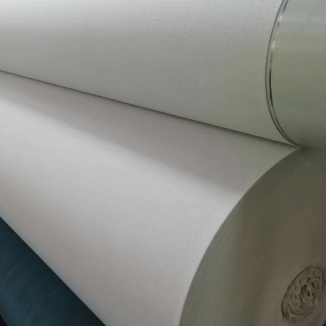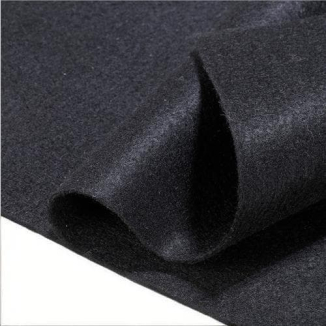Maintenance Tips for Concrete Canvas Structures: Extend Their Lifespan
Concrete canvas—most folks call it cement blanket, honestly—is everywhere in construction these days, and for good reason: it’s tough, goes up fast, and works for just about anything. I’ve used it on civil jobs, emergency fixes, even backyard landscape projects, and the ones that hold up best? They’re the ones someone took time to maintain. It’s not like you need to baby it, but skip regular care, and it’ll start falling apart way sooner than it should. Below are the tricks I’ve picked up over the years to keep cement blankets in shape, plus I’ll work in “cement curing blankets” naturally—since that’s a tool you’ll actually need, not just a term to check a box.
1. Check It Regularly—Small Problems Don’t Stay Small
Visual checks are your first line of defense here. I’ve seen tiny tears turn into huge, expensive repairs because someone thought “it’ll be fine.” Here’s how to do it right, no fancy tools needed:
How often to check: If it’s in a busy spot—like a walkway at a factory—or a rough area (flood zones, places with heavy rain), check it once a month. For quieter spots, like a residential retaining wall that no one touches much, every three months is enough.
What to look for: Start with the edges—they fray first, especially if there’s foot traffic or debris rubbing against them. Seams are another big one: water loves to seep through loose seams, and once it gets under the blanket, it’ll weaken the whole structure. Also, keep an eye out for discoloration: dark splotches might be mold (common in damp areas), and weird lighter spots could mean chemicals (like fertilizer from nearby lawns) are eating at it.
Always check after bad weather: Last spring, a client’s cement blanket flood barrier got hit by a thunderstorm. They didn’t check it for a week, and by then, a small crack from the wind had filled with water—when it froze that night, the crack split open even more. Save yourself the hassle: after heavy rain, strong winds, or extreme heat/cold, walk around it once. If there’s standing water, sweep it off right away—don’t let it sit and soak in.
Tie it back to installation: If your blanket’s new (less than 6 months old), remember how you used cement curing blankets to help it set? When you check, make sure the curing didn’t leave weak spots—like areas that hardened unevenly. Those spots will break first, so catch them early.
2. Clean It Gently—Debris Kills Cement Blankets
I can’t tell you how many times I’ve seen a cement blanket fail just because no one cleaned it. Leaves, dirt, algae—they build up, block drains, and eat away at the material. Here’s how to clean it without messing it up:
Stick to low pressure: For regular dirt, a garden hose on low setting works perfect. Don’t use a pressure washer—last year, a crew I worked with used one, and it blew off the blanket’s protective coating. Six months later, that area was brittle and cracking.
Tackle tough stains carefully: Oil or chemical spills? Mix a little mild dish soap with water (nothing harsh—no bleach unless it’s mold, which I’ll get to) and use a soft-bristle brush. Scrub light—think like you’re washing a delicate shirt. Too hard, and you’ll tear the fabric underneath.
Keep drains clear: This is non-negotiable. If your cement blanket is part of a retaining wall, check the weep holes (the small holes at the bottom) every time you clean. I once had to fix a wall where dirt clogged the weep holes—water built up behind the wall, pushed the blanket out, and we had to redo half of it. Just take a small wire or pipe cleaner to clear the holes—two minutes, max.
Kill mold and algae the right way: In humid areas, algae grows fast—it looks like green slime, and it’ll make the blanket slippery too. Mix 1 part bleach to 10 parts water (stronger than that will damage the material), spray it on the algae, let it sit 10-15 minutes, then rinse it off with the hose. That’ll kill it without harming the blanket.
Never use abrasive tools: Scrapers, steel wool, acidic cleaners (like vinegar for tough stains)—don’t even think about it. They’ll strip the protective layer, and once that’s gone, the blanket is defenseless against water and dirt.
3. Fix Small Damages Fast—Don’t Wait for a Disaster
Even with checks and cleaning, you’ll get small tears or punctures—maybe from a stray rock, or a lawnmower hitting it. Fix them within a week, and you’ll avoid big problems. Here’s my go-to repair process:
Grab the right kit: For tears smaller than 6 inches, use a cement canvas repair kit—every manufacturer sells them, and they come with a matching patch and glue. Don’t try to use regular superglue or a random fabric patch; they won’t stick, and the repair will fail. For bigger tears (more than 6 inches), call a pro—but make sure they use the same brand of cement blanket as yours. Mismatched materials will split apart.
Step-by-step repair (it’s easy):
① First, clean the damaged area with soapy water—get rid of all dirt and grease. Dry it completely (if it’s wet, the glue won’t stick).
② Cut the patch so it’s 2-3 inches bigger than the tear on all sides. That way, it covers the whole damaged area and sticks to solid material around it.
③ Put glue on both the back of the patch and the damaged part of the blanket—spread it evenly, no globs.
④ Press the patch down hard—use a roller (or even a heavy book if you don’t have a roller) to squeeze out air bubbles. Bubbles mean the patch won’t bond right.
⑤ Let it cure like the kit says—usually 24-48 hours. Pro tip: If it’s cold or dry outside, cover the patch with a cement curing blanket while it cures. It keeps the temperature steady and locks in moisture, so the glue bonds way stronger. I did this last winter, and the repair still looks brand new.
Fix seams carefully: If seams start to pull apart, use a seam sealant made for cement blankets—generic caulk won’t work. Put a thin line of sealant along the gap, press the seam together with your fingers (wear gloves!), and let it dry. Check it again in a week to make sure it didn’t pull apart.
4. Protect It From the Elements—Weather and Plants Are Enemies
Cement blankets are tough, but sun, cold, and even trees will wear them down. A little protection goes a long way:
Block UV rays: If your blanket is in direct sun all day, it’ll fade and get brittle. Every 2-3 years, put on a UV-resistant coating—ask the manufacturer which one they recommend. I did this for a client’s outdoor patio cover, and after 5 years, it still hasn’t faded or cracked.
Handle extreme temps: In hot climates, make sure there’s airflow—if the blanket is wrapped around a pipe or a wall, don’t seal it tight. Heat builds up, and the material will soften. In cold climates, use cement curing blankets even after installation—when temperatures drop below freezing, the blanket traps heat and stops moisture inside the cement from freezing (frozen moisture expands, which causes cracks).
Keep chemicals and pests away: If your blanket is near a farm or factory, put a plastic sheet around the bottom—fertilizer, oil, and even mouse urine can damage it. If you spill something on it, clean it right away (use the soapy water trick from Section 2) before it soaks in.
Trim nearby plants: Tree roots and vine roots are sneaky—they’ll grow under the blanket and push through, causing punctures. Trim bushes and trees within 3 feet of the blanket, and if you have big trees nearby, install a root barrier (a plastic sheet buried 6 inches deep) to stop roots from reaching it. I had a client who skipped this, and a maple tree root pushed through their cement blanket retaining wall—cost them $2,000 to fix.
Final Thought: Maintenance Is Cheap—Repairs Aren’t
Here’s the thing: taking care of a cement blanket doesn’t take much time. 15 minutes a month to check it, an hour every few months to clean it— that’s it. But if you skip it, you’ll end up replacing parts (or the whole thing) way sooner. I’ve seen clients get 30+ years out of a cement blanket with regular care, versus 10 years if they ignore it.
And remember: the cement curing blankets you use during installation? They’re just the start. The real work is the small, regular steps—checking, cleaning, fixing—that keep it going. Whether it’s a retaining wall, a flood barrier, or a backyard feature, these tips will make sure your cement blanket lasts as long as it should.
Contact Us
Company Name: Shandong Chuangwei New Materials Co., LTD
Contact Person :Jaden Sylvan
Contact Number :+86 19305485668
WhatsApp:+86 19305485668
Enterprise Email: cggeosynthetics@gmail.com
Enterprise Address: Entrepreneurship Park, Dayue District, Tai 'an City,
Shandong Province









